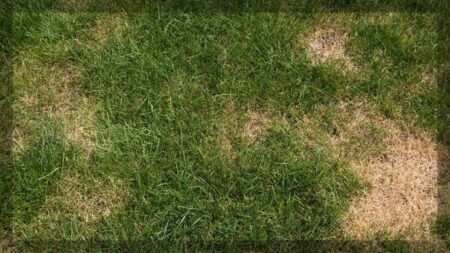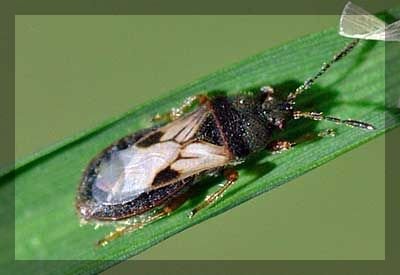 VOLUME 8 ⚪ ISSUE NO. 11 ⚪ JUNE 4, 2024
VOLUME 8 ⚪ ISSUE NO. 11 ⚪ JUNE 4, 2024
IN THIS ISSUE
◻️ Grass Cutting 101
◻️ Chinch Bugs
◻️ Fertilization Program
◻️ Caterpillars
This bi-monthly newsletter is aimed at sharing with you what our teams are working on during the different seasons, industry trends we’re seeing or excited about, ways to keep your landscape healthy, and events we’re hosting or attending in the local community. We always want to make sure you are informed as to what’s happening on your property and inspired to discover fresh ideas and insights for your yard. We will also pass along information on things you should be on the lookout for, topics we find interesting, and what’s ahead as we transition from each season to the next.
Over the past 34 years we’ve been asked almost every landscape-related question there is which allows us to anticipate your questions by sharing timely gardening tips, how-tos, and checklists. If there is ever a special topic you’d like to see us discuss in a future edition, please let us know!
Until next time, enjoy the last few weeks of this spring season. ~Shayne
GRASS CUTTING 101
Homeowners have varying preferences on aesthetics when it comes to both their indoor and outdoor living spaces, but they all agree that properly maintained lawns and gardens are hands down, the most important feature in creating a good foundation for everything else to sit upon.
A healthy and lush lawn can be achieved by following proper mowing practices and switching them up as the weather and soil conditions dictate. At this time of year, we “Mow High – June & July” – meaning we leave the grass at about 3.5 inches in height and leave the clippings to add nutrients back into the soil while also helping to keep it cool.
As the weather heats up, taller blades of grass help to:
- Shade the soil preventing precious water loss from evaporation or scorching of the roots from direct sunlight
- Suppress weeds by crowding them out and stopping future seed germination
- Shade the lawn’s roots from intense heat to help them grow deep & strong. Longer roots help a lawn better deal with summer drought.
Here are a few other techniques that will help your lawn look fantastic from one season to the next.
- Keep mower blades sharp! Clean cuts help grass conserve water and deter disease
- Adjust cutting height for the type of grass and the season
- Change directions and pattern each time you mow to avoid compacting and to help new blades grow straight up
- Avoid cutting a wet lawn whenever possible
- Excessive clippings / clumps should be removed to prevent thatch buildup
- Trimming and edging add the finishing touch!
CHINCH BUGS
Chinch bugs are infamous for causing turfgrass damage (above) that looks like wilting and browning of otherwise healthy grass. They are also one of the oldest known lawn and agricultural pests in North America.
Chinch bugs have needle-like mouthparts and will feast upon many different grass types eventually causing them to die. They pierce the grass blade and suck out the juices which weakens the grass, slowly killing it while also leaving it susceptible to disease. An infestation can damage a large area of lawn and should be dealt with as quickly as possible.
All lawns will have some bugs, and some are very beneficial while others are not. The problem occurs when the population of bugs exceeds an acceptable level.
The best deterrent for chinch bugs is healthy turf and soil. Lawns that are kept moist and do not have excessive thatch build up are undesirable to these critters because they thrive in dry conditions. Using varieties of grass that are bug-resistant is also helpful. Big-eyed bugs like cicadas, aphids, and leafhoppers are predators and can also help keep their populations in control.
Let us know if you suspect chinch bugs on your property!
FULL FERTILIZATION PROGRAM
Our organic-based fertilization program identifies and then addresses any deficiencies or pH issues your lawn might be experiencing. If there are no issues, we will follow a standard fertilization program.
Timing is most important with this program. After a complete soil analysis, broadleaf weeds and crabgrass are treated if needed. Next, we apply a controlled-release organic-based fertilizer to nourish the lawn followed by a lawn inspection to scout for damaging insects or turf disease.
in mid-summer, one of the most important practices for a healthy lawn is performed – aeration! This allows air, water and nutrients to reach the roots easier as they grass continues to grow and put down stronger roots.
By fall, another round of weed control and fertilizer will have been applied, and by mid-fall we will perform another lawn inspection before the ground freezes and winter begins.
Please contact your landscape consultant or call the office if you think your lawn would benefit from this comprehensive program.
KNOW YOUR CATERPILLARS
There is a ton of misinformation out there concerning the influx of caterpillars we’re currently experiencing. PLEASE take a moment to learn the difference between the good guys and the bad guys.
ABOVE: EASTERN TENT CATERPILLARS – THE GOOD GUYS!
Eastern tent caterpillars are native, build “tents” in trees, and provide important food for wildlife. Although their tents are unsightly, they are a beneficial part of local ecosystems. Please, DO NOT BURN OR REMOVE THEM! The caterpillars are easily identified by the white stipe along the back (center photo below).
Young caterpillars emerge earlier than spongy moth caterpillars and will feed on foliage but will not kill a healthy tree. These caterpillars are an important food source for birds so do not poison the nest either. If you really want it gone, slice it open and let the birds gobble them up!
BELOW: (L-R) Forest Tent Caterpillar, Eastern Tent Caterpillar, Spongy Moth (FKA gypsy moth) Caterpillar.
The Forest Tent caterpillar (L) is also native and beneficial. Despite its name, it does not build tree nests but instead lays egg masses on twigs, covered in a protective layer for overwintering. Look for the white spots along the back.
THE BAD GUY
The Spongy Moth caterpillar (R), formerly known as the Gypsy Moth caterpillar, is the one of most concern. Introduction into the wild happened in 1869 when they were accidentally released from a home in Massachusetts where they were imported to establish a silkworm industry. They are NOT native, typically have an outbreak every 7 -10 years, and can quickly defoliate a tree with their insatiable appetites.
(Below) Eggs are laid in masses on trees, in woodpiles or sheltered man-made surfaces like porches or vehicles in late July or August. They are covered in a tan “spongy” casing about 1.5 inches long. If they are allowed to remain, they will hatch in the spring, crawl up the tree and start eating the leaves for the next two months perpetuating the cycle.
You must remove the egg mass and destroy it properly – squishing it underfoot won’t work!
“Some old-fashioned things,
like fresh air and sunshine, are hard to beat. “
— Laura Ingalls Wilder












